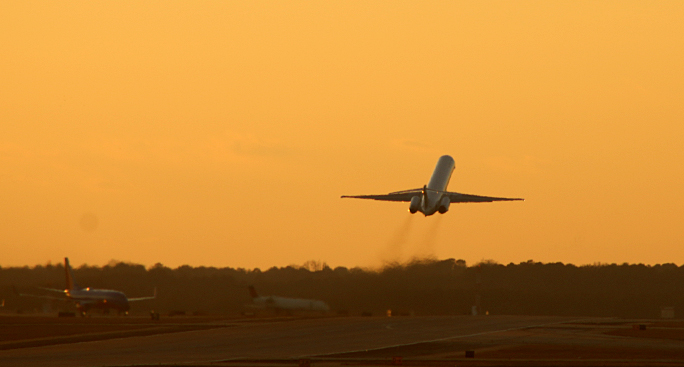Unmanned aircraft systems — specifically, drones — have been increasing in number in the skies across the United States; and the use of them is also increasingly placing aircraft in danger during flight, according to what has been deemed an exclusive special investigative report from WAGA-TV Fox 5 News in Atlanta.
Dana Fowle — who is the same veteran investigative reporter whose findings pertaining to the questionable cleanliness of drinking glasses found in hotel rooms gained worldwide attention back in 2007 — had flown with a private pilot based in Tennessee who related two separate incidents where he was piloting his small aircraft with his family aboard when a drone would seemingly come from out of nowhere, placing the aircraft in danger.
In one of those incidents, Brett Henley claimed that had he not abruptly changed the course of the aircraft, the results could have been “catastrophic.”
One problem is that drones are not detected by the radar systems aboard aircraft; so preparing for their appearance in the skies is virtually impossible.
Even more disturbing is that — as the result of six months of uncovering official records by Dana Fowle — commercial pilots for Delta Air Lines, AirTran and other airlines have been increasingly reporting the sightings of drones in their airspace as high in altitude as 25,000 feet, which is significantly above the current altitude limit of 400 feet; and the drones are specifically not to be operated anywhere near an airport…
…which poses the question: could a drone be in the path of your next flight?
The Federal Aviation Administration of the United States is proposing to amend its regulations to adopt specific rules pertaining to permitting the operation of small unmanned aircraft systems in what is known as the National Airspace System — and you have an opportunity to comment on this proposal through 11:59 in the evening on Friday, April 24, 2015: “These changes would address the operation of unmanned aircraft systems, certification of their operators, registration, and display of registration markings. The proposed rule would also find that airworthiness certification is not required for small unmanned aircraft system operations that would be subject to this proposed rule. Lastly, the proposed rule would prohibit model aircraft from endangering the safety of the National Airspace System.”
Under the proposed rule — which would not apply to model aircraft — being considered by the Federal Aviation Administration of the United States, the person actually flying a small unmanned aircraft system would be an “operator.” An operator would “have to be at least 17 years old, pass an aeronautical knowledge test and obtain an FAA UAS operator certificate. To maintain certification, the operator would have to pass the FAA knowledge tests every 24 months. A small UAS operator would not need any further private pilot certifications (i.e., a private pilot license or medical rating).”
The new rule also proposes operating limitations designed to minimize risks to other aircraft and people and property on the ground:
- An operator of a small unmanned aircraft system must always see and avoid manned aircraft. If there is a risk of collision, the unmanned aircraft system operator must be the first to maneuver away.
- The operator must discontinue the flight when continuing would pose a hazard to other aircraft, people or property.
- An operator of a small unmanned aircraft system must assess weather conditions, airspace restrictions and the location of people to lessen risks if he or she loses control of the unmanned aircraft system.
- A small unmanned aircraft system may not fly over people, except those directly involved with the flight.
- Flights should be limited to 500 feet altitude and no faster than 100 miles per hour.
- Operators must stay out of airport flight paths and restricted airspace areas, and obey any Temporary Flight Restrictions issued by the Federal Aviation Adminstration.
The proposed rule maintains the existing prohibition against operating in a careless or reckless manner. It also would bar an operator from allowing any object to be dropped from the unmanned aircraft system.
According to this fact sheet from the Federal Aviation Administration, 146 Certificates of Waiver or Authorization were issued in 2009 to government entities which wanted to fly an unmanned aircraft system in civil airspace for uses which include but are not limited to law enforcement, firefighting, border patrol, disaster relief, search and rescue, military training, and other government operational missions. That number almost tripled in 2013 to 423; and remember, this is only for government entities — not unmanned aircraft systems operated by private civilian or commercial entities.
More information can be found in this comprehensive document titled Integration of Civil Unmanned Aircraft Systems (UAS) in the National Airspace System (NAS) Roadmap, which was released from the Federal Aviation Administration back in 2013.
Click here for a document containing additional information regarding the framework of regulations pertaining to the proposed rule regarding the operation of unmanned aircraft systems…
…and click here for additional details of the aforementioned incidents as conveyed by Brett Henley — as well as the exclusive special investigative report by Dana Fowle herself.
Photograph ©2015 by Brian Cohen.
